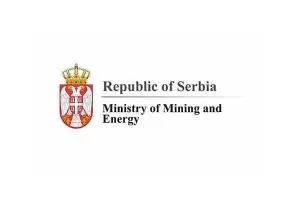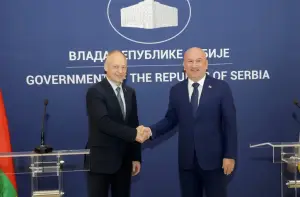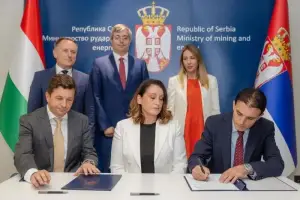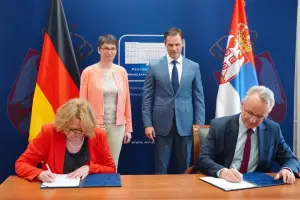- Serbia
Get to know Serbia
- Citizens
Culture and science
Health services
Pension and disability insurance
- Business
Employment
Economy
- Media
- Government
- Contact
Keep in touch
Contact form
Back
Keepin touch
Whether you have a question, comment, suggestion or any problem in the purview of the government, send us your message and we will try to respond as soon as possible. If your problem is not in our purview, we will forward your message to the relevant institution.
Q:
A:
Foreign trade increases in first four months of 2006
Belgrade,
31 May 2006
The Serbian Statistical Office stated today that Serbia's overall foreign trade in the period from January to April 2006 totalled $5,035 million, up 19.1% compared to the same period in 2005. Expressed in euros, foreign trade reached €4,174 million, which is an increase of over 29% against the same period last year.
Exports stood at $1,525 million, up 13.2% compared to the same period last year, while imports totalled $3,509 million, a 21.8% increase in relation to the same period in 2005.
Expressed in euros, exports jumped 22.7% to €1,264 million, while imports went up 31.9% to €2,910 million in relation to the same period previous year.
Increased imports in the past four months were a result of the import of energy sources. Namely, the import of gas, oil, electricity, coke, butane and diesel in the first three months stood at $666 million, making 19% of the total import.
Furthermore, the increase is also due to copper and iron ores import ($78 million), which are used in the production of elementary and other metals, since at this moment the prices of these ores are favourable.
Increased demand (public and private spending) also bore influence on the rise in imports. The increased availability of loans resulted in the increase of demand, which in turn affected the import. This is confirmed by the fact that the import of road vehicles in the period January-April was $248 million, which is 7.1% of the total import.
Increased exports were driven by the initial effects of privatisation and the restructuring of companies, by signed and ratified free trade agreements with signatory countries of the Stability Pact, by food (corn $69 million, sweet corn $44 million, sugar $57 million) and ready-made textile goods trade surplus, thanks to the agreement signed with the EU and preferential status of Serbian goods, as well as by an increase in world prices of basic metals and general economic activity.
The trade deficit for the period January-April 2006 stood at $1,984 million, up by 29.4% against the same period last year. Expressed in euros, the deficit stood at €1,645 million, up by 40%.
The exports-to-imports ratio was 43.5%, showing a fall against the same period last year, when it stood at 46.8%. Expressed in euros, the ratio was 43.4%, whereas last year it was 46.7%.
The most exported items in the period January-April 2006 were intermediate goods accounting for 69.5% ($1,059 million), followed by consumer goods, which made up 25.4% ($388.3 million) and equipment, making up 5.1% ($77.4 million) of total exports.
Imports were dominated by intermediate goods accounting for 64% ($2,245 million), followed by consumer goods, 22.3% ($782.8 million) and equipment, 13.7% ($481.4 million).
Major importers of goods from Serbia were Italy ($262.4 million), Bosnia-Herzegovina ($179.3 million) and Germany ($163.3 million). The largest exporters to Serbia were Russia ($642.3 million), Germany ($319.3 million) and Italy ($279.9 million).
The greatest foreign trade was recorded in commerce with the EU, which accounted for more than half of total trade. The foreign trade surplus realised in commerce with Bosnia-Herzegovina was $100 million, whereas with Italy the foreign trade is more balanced than last year.
Thanks to the free trade agreement, as well as the competitiveness of Serbian products, a surplus was also achieved in commerce with Macedonia, but the largest deficit remained in commerce with Russia, due to energy imports, mainly oil and natural gas.
Expressed in euros, exports jumped 22.7% to €1,264 million, while imports went up 31.9% to €2,910 million in relation to the same period previous year.
Increased imports in the past four months were a result of the import of energy sources. Namely, the import of gas, oil, electricity, coke, butane and diesel in the first three months stood at $666 million, making 19% of the total import.
Furthermore, the increase is also due to copper and iron ores import ($78 million), which are used in the production of elementary and other metals, since at this moment the prices of these ores are favourable.
Increased demand (public and private spending) also bore influence on the rise in imports. The increased availability of loans resulted in the increase of demand, which in turn affected the import. This is confirmed by the fact that the import of road vehicles in the period January-April was $248 million, which is 7.1% of the total import.
Increased exports were driven by the initial effects of privatisation and the restructuring of companies, by signed and ratified free trade agreements with signatory countries of the Stability Pact, by food (corn $69 million, sweet corn $44 million, sugar $57 million) and ready-made textile goods trade surplus, thanks to the agreement signed with the EU and preferential status of Serbian goods, as well as by an increase in world prices of basic metals and general economic activity.
The trade deficit for the period January-April 2006 stood at $1,984 million, up by 29.4% against the same period last year. Expressed in euros, the deficit stood at €1,645 million, up by 40%.
The exports-to-imports ratio was 43.5%, showing a fall against the same period last year, when it stood at 46.8%. Expressed in euros, the ratio was 43.4%, whereas last year it was 46.7%.
The most exported items in the period January-April 2006 were intermediate goods accounting for 69.5% ($1,059 million), followed by consumer goods, which made up 25.4% ($388.3 million) and equipment, making up 5.1% ($77.4 million) of total exports.
Imports were dominated by intermediate goods accounting for 64% ($2,245 million), followed by consumer goods, 22.3% ($782.8 million) and equipment, 13.7% ($481.4 million).
Major importers of goods from Serbia were Italy ($262.4 million), Bosnia-Herzegovina ($179.3 million) and Germany ($163.3 million). The largest exporters to Serbia were Russia ($642.3 million), Germany ($319.3 million) and Italy ($279.9 million).
The greatest foreign trade was recorded in commerce with the EU, which accounted for more than half of total trade. The foreign trade surplus realised in commerce with Bosnia-Herzegovina was $100 million, whereas with Italy the foreign trade is more balanced than last year.
Thanks to the free trade agreement, as well as the competitiveness of Serbian products, a surplus was also achieved in commerce with Macedonia, but the largest deficit remained in commerce with Russia, due to energy imports, mainly oil and natural gas.
-
 Belgrade, 21 July 2025
Belgrade, 21 July 2025Construction of oil pipeline with Hungary to begin early next year
-
 Belgrade/Athens, 17 July 2025
Belgrade/Athens, 17 July 2025Serbia continues to align with EU in field of energy
-
 Kostolac, 14 July 2025
Kostolac, 14 July 2025First solar power plant Petka in Kostolac put into trial operation
-
 Belgrade, 11 July 2025
Belgrade, 11 July 2025Potential for improving cooperation with Belarus in many areas
-
 Požega, 5 July 2025
Požega, 5 July 2025Section of Pakovraće - Požega highway officially opened
-
 Belgrade, 2 July 2025
Belgrade, 2 July 2025Technical specifications defined for Serbia-Hungary oil pipeline
-
 Belgrade, 30 June 2025
Belgrade, 30 June 2025IMF confirms Serbia successfully implementing all agreed reforms
-
 Belgrade, 27 June 2025
Belgrade, 27 June 2025Double Taxation Avoidance Agreement with Germany signed
-
 Kostolac, 25 June 2025
Kostolac, 25 June 2025Construction of Kostolac wind farm nearing completion
-
 Belgrade, 24 June 2025
Belgrade, 24 June 2025Government supports request for new postponement of sanctions against NIS
